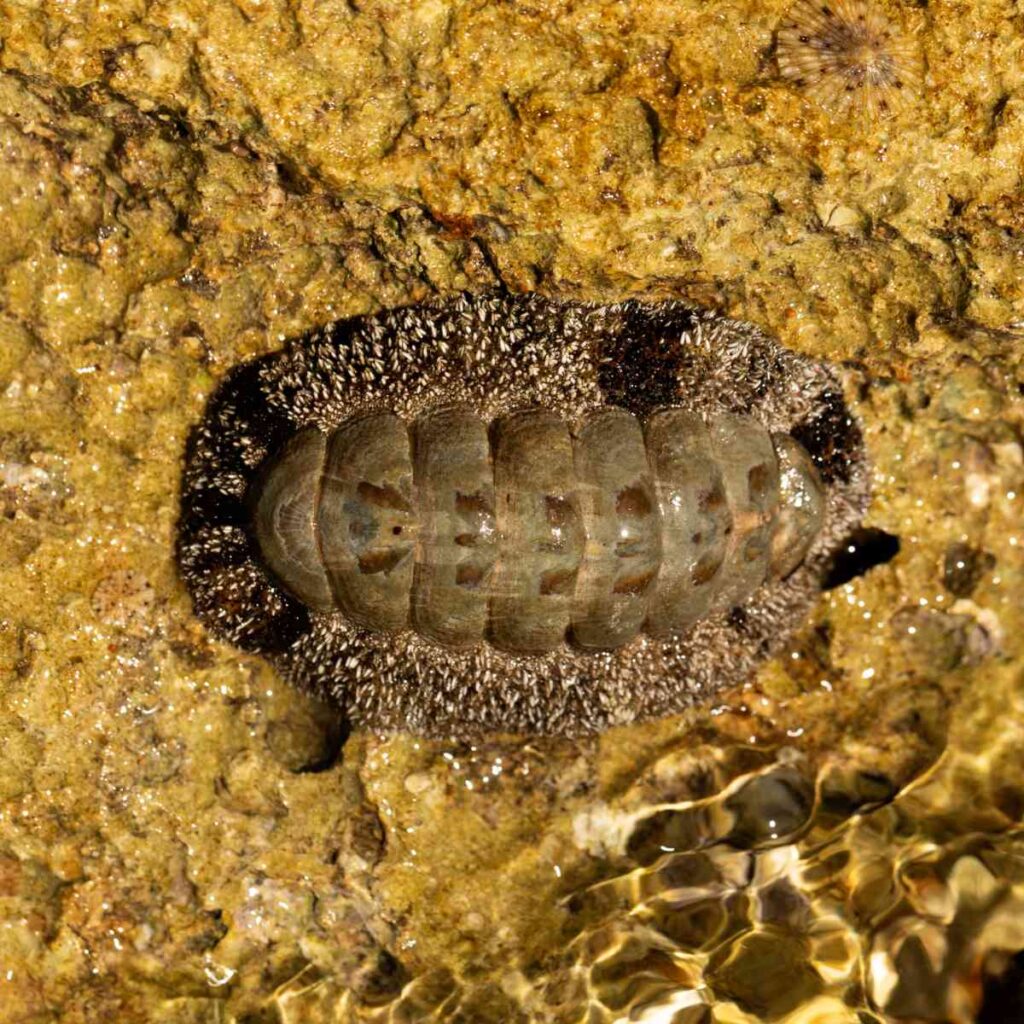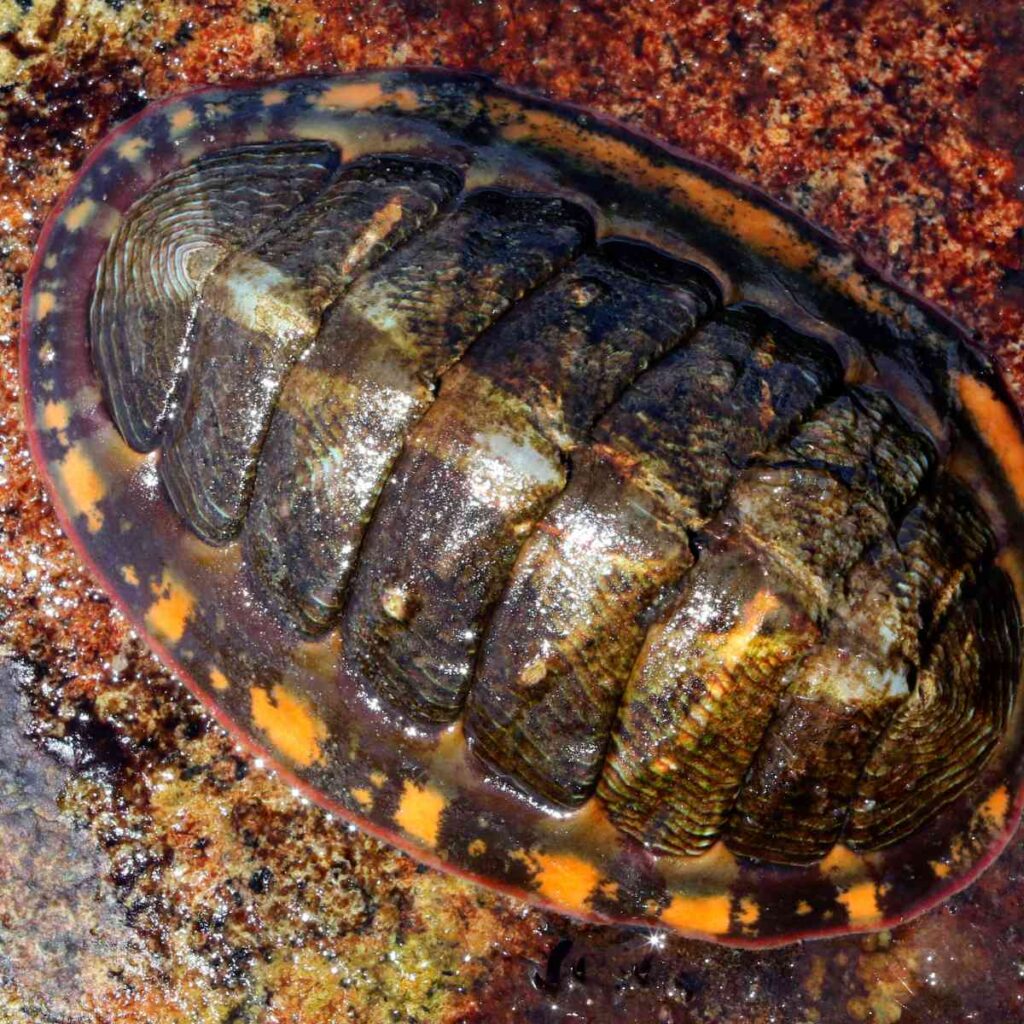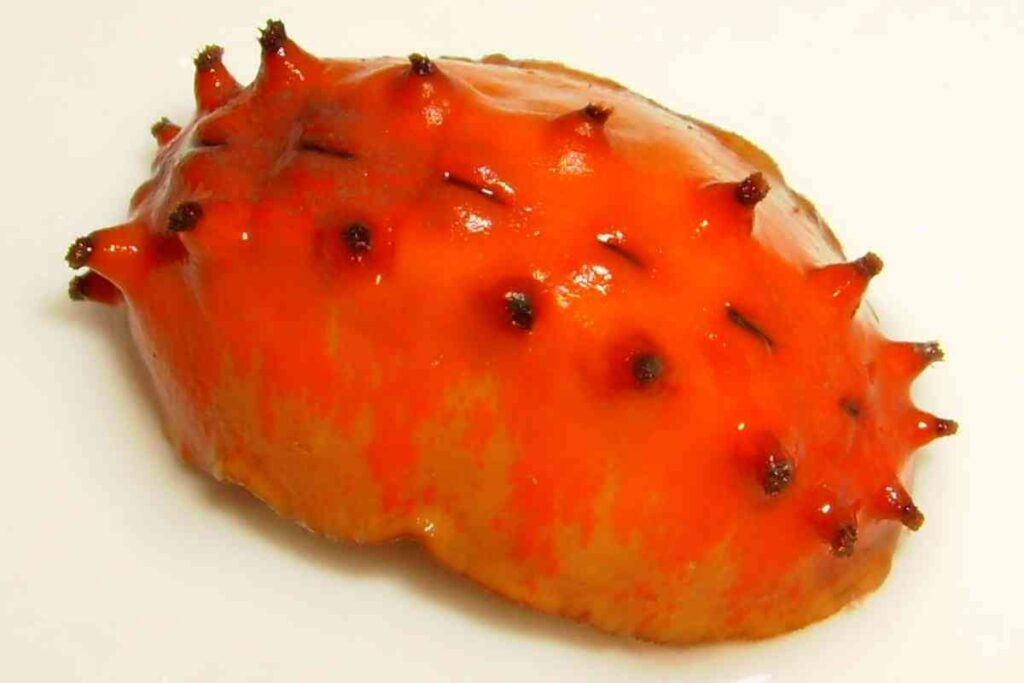Last Reviewed and Updated on February 4, 2023
Chitons are fascinating creatures that have existed for over 500 million years. From their tough armor-like exterior to their ability to roll into a ball, chitons are truly remarkable. Learn more about them, from the basics to 10 interesting facts about chitons that you might not have known.

About Chitons
Chitons are marine mollusks with a shell in the class Polyplacophora. Other common names are gumboots, sea cradles, coat-of-mail shells, or suck-rocks.
Over 900 known living species of chitons (and about 430 fossil ones) exist.
Chitons can be found worldwide in saltwater, from colder waters to the tropics. Some species inhabit shallow waters, and a few species live beyond the photic zone (sunlight zone) in very deep waters.
The reproduction is usually external, with the female releasing eggs and the male releasing sperm in the water.
They are generally herbivorous grazers, eating algae and such, but some species are omnivorous or even carnivorous.
Interesting Facts About Chitons
You now know the basics, but what makes these mollusks so interesting? Read through these facts about chitons and find out.

1. Their shell is composed of eight separate shell plates
Unlike most mollusks with a single or two-part shell, the shell of a chiton is composed of eight separate shell plates or valves. The size and shape of these plates differ between different species.
2. Some species have their shell plates completely covered

The shell plates of some species, such as the butterfly chiton, are almost completely covered by a raised girdle.
3. Chitons don’t have an easily definable head or tail
Their snail-like foot takes up the majority of their bodies. The head or the tail can’t be seen from the dorsal side (the back portion of the body).
4. They use their “tongue” to scrape food from rocks
The mouths of chitons are on the underside. Inside the mouth is a tongue-like structure (radula). The radula has many rows of teeth (17 teeth per row). Chitons use it to scrape food (usually algae) off rocks and other surfaces.
5. Gumboot chiton can grow to 14 inches / 36 cm
While most chitons only grow to about 2 inches / 5 cm, the gumboot chiton (Cryptochiton stelleri) can grow to over 14 inches / 36 centimeters. It can also weigh more than 4.4 lb / 2 kg. The largest species of chiton is the Gumboot chiton.
6. Chitons can roll into a ball
For an animal that doesn’t really move around much, it may be a surprise they can roll their bodies into a ball. Although most animals with external armor, capable of rolling their bodies into a ball (like hedgehogs, trilobites…), do so for defensive reasons, chiton rarely curls into a ball as a means of defense. They prefer to take their chances in a more vulnerable position which makes it more likely for them to encounter terrain to which they can attach themself too and be safer that way (source).
7. They have a unique brain in mollusks
Chitons don’t have a classical brain, and for a long time, it was believed they didn’t have a brain at all. They don’t have true ganglia (group of neuron cell bodies) present like other mollusks, but they do have a ring of dense neural tissue around the esophagus that has recently been classified as a true brain (source).
8. Some species are really colorful
With some species, you would have trouble telling them apart from rocks; they can blend in very well. On the other hand, some species are really colorful featuring colors such as red, blue, white, and purple, along with interesting zig-zag patterns or straight lines.
Flame lined chiton is the perfect example of a colorful species.
9. Some chiton species really like “their spot”
Several species of chiton exhibit homing behavior. They will inhabit a spot and journey away from that spot to feed; however, when they are done feeding, they will return to that exact spot. Why they exhibit this behavior is still unknown.
10. Washed-up shell plates are commonly referred to as butterfly shells
When chitons die, the eight shell plates come apart as the girdle that was holding them together decomposes. Individual shell plates can be washed-up on the beach; due to their shape, they are commonly known as butterfly shells.
